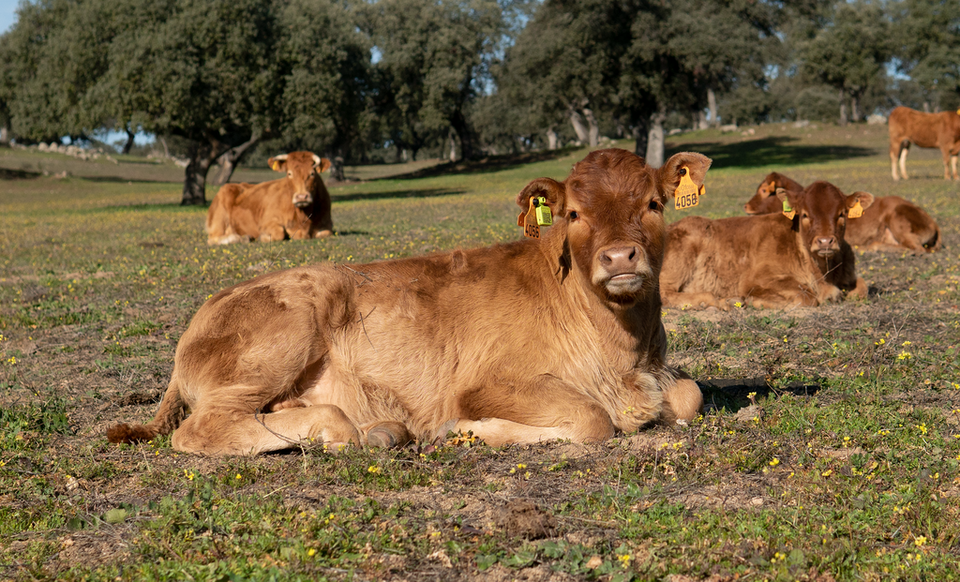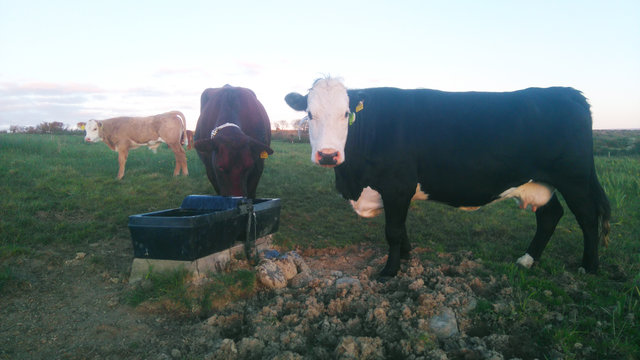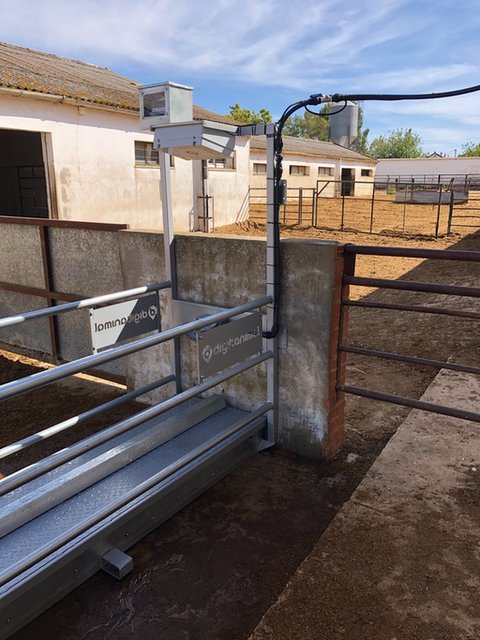Article
Data from farmer to retailer
Working towards the whole life span tracking and monitoring of cattle

A calve wearing a BLE ear tag (green) used for monitoring the link between calves and their mothers preweaning.
From farmers to retailers, and from transporters to slaughterhouses: the beef supply chain is a complex system that involves many stakeholders. The partners in the ‘Decision-making Optimization in Beef Supply Chain’ use case (UC5.4) aim to use IoT solutions to optimize the beef supply chain from breeding farm to supermarket. For this, they work on the collection, processing and sharing of data in every step of the chain. The strive is to create the first fully traceable blockchain in the European meat market.
A lot of the stakeholders in the beef supply chain already have some sort of data gathering system in place. However, currently most of the data gathered is mainly being used for food safety purposes. The potential of structured large-scale data collection for the improvement of resource efficiency, animal welfare and product transparency in the beef supply chain is still largely unexplored. That is, until now. Through IoF2020 a broad coalition of research institutes, tech companies and farmers has been working hard to unlock the full potential of data in the beef supply chain.
The benefits of a traceable supply chain: a win-win situation for producers and consumers
The benefits that the large-scale integration of data has to offer are both substantial and diverse. The expectations for the use case were that the better use of data would, among others, result in a decrease in fertilizer and water consumption, a decrease in total work effort, and an increase in selling price of beef. Some of these benefits are the result of data integration in the work of one or a few stakeholders in the supply chain. However, other benefits can only be achieved through a holistic chain-wide integration of data. For example: when every stakeholder in the supply chain logs data into one central system, a blockchain, this will offer opportunities for certification automation and raise supply chain transparency for consumers.
”By now, the use case partners are collecting valuable data in each stage of the beef supply chain.”
Many consumers are willing to pay a premium for their products when certain quality, sustainability or animal welfare standards are being met. A blockchain based on automated data collection enables producers and retailers to log, show and proof that their production process meets the consumers’ demands. A true win-win situation: the consumer gets the product they want, and producers get a premium price for their products whilst decreasing production cost by optimizing their processes.

Cows wearing GPS collars at a testbed for product development and data testing in Ireland.
The progress so far: testing, improvements, and a standardized model for animal information management
In the past few years, great progress has been made already. Multiple types of sensors and measuring tools have been developed, improved or deployed at different testbed sites, spread out over 6 countries. For example, an IoT automatic scale recently used to monitor the growth and drinking behavior of calves at the feedlot was developed. Furthermore, in order to make long-term tracking of individual calves and cows possible a Bluetooth Low Energy (BLE) ear tag has been developed. Through combining already existing GPS collars with newly developed ear tags the researchers in this use case are able to monitor and improve tracking behavior of the BLE ear tags. With an operational life of 280 days and a cost per unit that is much lower than that of existing alternatives such as GPS collars the ear tag is now, after testing and further improvements, an affordable and robust option for long-term GPS tracking of individual animals.
Next to the development of new IoT-based measuring tools and sensors the processing, bundling and representation of data had to be sorted. For this, a standard data model for animal information management has been developed, and data coming from different IoT devices has been integrated in a common FIWARE-based cloud platform.
By now, the use case partners are collecting valuable data in each stage of the beef supply chain.

An IoT scale used at feedlots to monitor calve growth and drinking behavior
What’s yet to come: aiming to create the first fully traceable blockchain in the European meat market
Now that the hurdle of enabling and testing the collection of data at every stage in the chain has been overcome it is time to take the next step: collecting data of individual animals as they go through each step in the chain. The beef production process takes multiple years. As a result, testing that has taken place so far has been done on different animals in different steps of the process. For true production transparency it is of course necessary to track every stage of individual animals. The team is working on this, and is expecting to be able to deliver this data a short while after IoF2020 will have ended, in 2021.
Once the team has been able to collect data on every stage of individual animals they will have achieved something truly unique: the whole life span tracking and monitoring of cattle, enabling retailers and consumers to retrace every step in the production process of their beef.